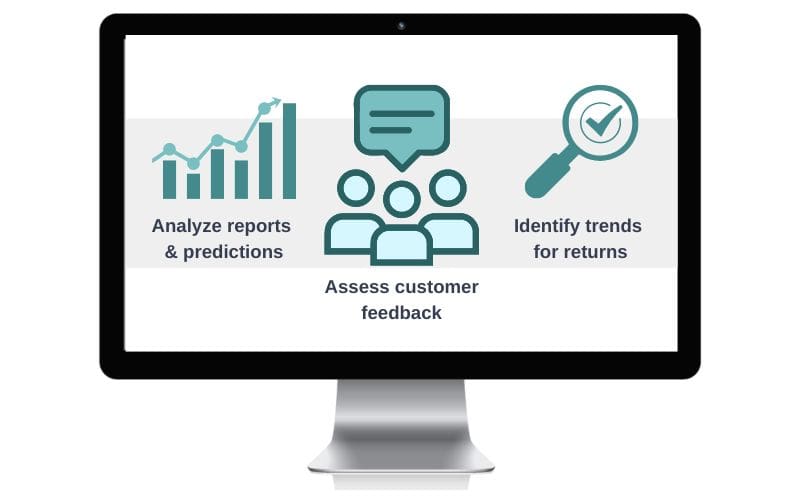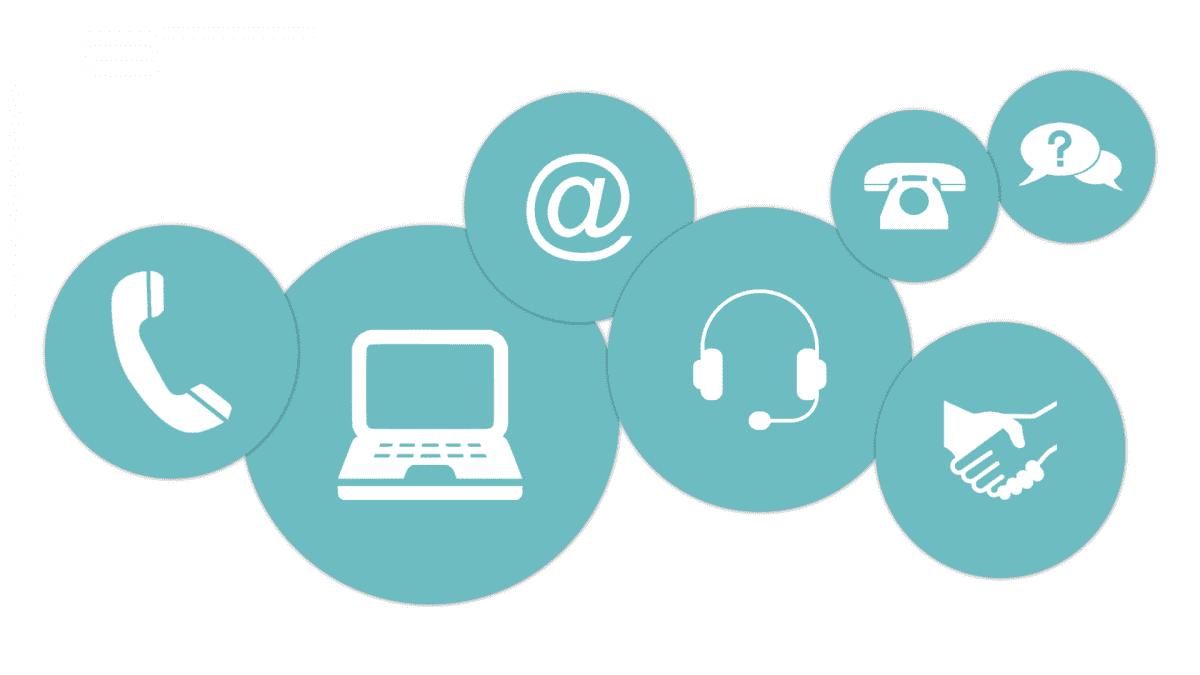
According to a recent consumer survey, returns cost eCommerce businesses 66% of the item’s original price. That’s a lot of money! Even more alarming is that the average online shopper returns items 20-30% of the time. Some common reasons for returns may be sizing issues, wrong gifts, purchasing multiple products with the intent to return some, or simply buyer’s remorse.

But even if the returned item’s in excellent condition and still on-demand, it doesn’t guarantee that you may profit from its subsequent sale. That’s because the returns process may be costly due to restocking fees, shipping costs, and other associated expenses.
Fortunately, there are several strategies you can use to leverage your returns solution to increase revenue and reduce costs. Particularly, we’ll delve into three pertinent factors that influence the actual cost of returns and how to tweak them into profitability schemes. They include returns policy, returns process, and future returns optimization.
Returns & Revenue: 3 Key Factors
1. Returns Policy: Is It Working For You?
The returns policy is the first step in leveraging your returns solution to increase revenue. It’s vital to ensure that your policy is clear, concise, and customer-friendly. This will help reduce the returns you receive and encourage customers to purchase from you again.
But before we discover various actionable tips for making a returns policy work for you, let’s uncover how specific policies set up companies for scams and revenue loss.
HOW SOME POLICIES SET UP COMPANIES FOR SCAMS AND REVENUE LOSS
Some policies are easy recipes for revenue loss, and you want to avoid them at all costs. Here are a few examples:
- Return items for any reason, no questions asked. While this may seem like an excellent way to provide excellent customer service, it can also open the door for scammers. These scammers will purchase an item with the intent to return it after using it and receiving a full refund.
- Return of opened merchandise. Permitting or accepting the return of opened merchandise can also set you up for scams. In most instances, the item has been used or tampered with, making its resale challenging.
- Return of items after a certain period. This policy may seem like a great way to reduce returns, but it can also lead to customer dissatisfaction and lost sales. For instance, if a customer purchases an item and it arrives after the return period, they may be unable to return it if they’re unsatisfied. And this can mean a business loss in terms of return purchases.
ACTIONABLE TIPS TO MAKE YOUR RETURN POLICY WORK FOR YOU
As we mentioned, the first step is to make your returns policy as straightforward and easy to understand as possible so buyers know what to expect from the get-go. But what next? How do you leverage a returns solution to make returns easier to avoid just giving away the product? Here are a few practical tips:
- Automate returns. With reliable returns management software, you can automate the entire returns process. This will help reduce the time and effort spent on manual processing and ensure that your customers receive their refunds quickly.
- Practice process efficiency. You also need a reliable returns solution to make the process as cost-effective and efficient as possible. For instance, the software should have powerful features that allow you to track returns, manage refunds, and generate reports.
- Expedite the pickup, validation, and credit-issuing process. One of the primary reasons customers are dissatisfied with returns is the time it takes to receive their refunds. To expedite this process, you should look for a returns solution that offers real-time tracking and automated credit issuing.

2. Returns Processing: Streamline It For Maximum Efficiency
How does your company process returns? The returns process should be as quick, efficient, and streamlined as possible to ensure customer satisfaction and reduce costs. Below, we cover and shed more light on the three critical dimensions of the returns process: returns pickup, examination, and reports management. Later, we’ll explain how integrating a returns solution into the entire process can improve revenue.
UNDERSTANDING THE RETURNS PROCESS: POTENTIAL WEAKNESSES AND SOLUTIONS
Here’s a quick overview of the returns process for most eCommerce businesses:
- Returns pickup. For most companies, the pickup process is nothing more than a customer dropping off the item at a designated location or having it picked up by a courier. This process can be time-consuming and costly, especially if the customer is located in a remote area. But there’s a better way. For instance, you can schedule pickups with the help of a reliable returns solution to save time and money.
- Examination. Once the item is received, it must be examined for any signs of damage or tampering. This can be done manually or through automated processes. If you opt for manual examination, you’ll need to hire additional staff and invest in training them on how to inspect items properly. On the other hand, automated processes can be done with the help of a returns solution. This will save time and money while ensuring accuracy.
- Reports management. Finally, you need to generate reports on the returns process. This is essential for tracking customer satisfaction and identifying areas that need improvement. With a top-quality returns solution, you can quickly generate reports in real time to get an accurate picture of how your returns process is performing.
INTEGRATING A RETURNS SOLUTION INTO YOUR PROCESS
Integrating a returns solution into your process is the best way to ensure maximum efficiency and cost savings. With a reliable returns tool, you can automate the entire process from pickup to credit issuing. This will help reduce costs, improve customer satisfaction, and increase revenue. Here’s how our solution can help:
- Route optimization. The best returns solutions have some of the most sophisticated delivery networks in the industry. They’re tailor-made to help users save time and costs by optimizing delivery and return routes. For instance, customers can choose from numerous integrated third-party fleets to complete their returns, ensuring they get a refund in time.
- Real-time tracking. With our real-time tracking feature, you can track the status of each return in real time. This will help you keep customers informed and reduce customer service inquiries.
- Automated reporting. The automated reporting feature in most returns management software helps you generate reports in real time. This will give you an accurate picture of how your returns process is performing and help you identify any areas that need improvement.
- Business rules setting. While you want to provide the best customer service, you also don’t want the returns process to compromise your business values or revenue. Thankfully, the best returns solution allows you to set up business rules that will help you manage returns in a way that’s beneficial for your company and customers alike.

3. Future Returns Optimization: Be Proactive and Minimize Returns
As returns are almost unavoidable in the eCommerce industry, it’s crucial to stay ahead of the curve and minimize returns. The best way to do this is by being proactive and using a returns solution to optimize the process. Here are some tips on how to do that:
- Analyze customer data/returns report. Analyzing customer data can help you identify trends in returns and make changes accordingly. For instance, if you notice that certain items are being returned more often than others, you can adjust your pricing or product descriptions to reduce returns. Likewise, if some customers return items more often than others, you can change your policies to serve their specific needs better.
- Use predictive analytics. Predictive analytics can help you anticipate customer behaviors like buying patterns, product preferences, and more. By knowing what excites your customers and what they need, you can recommend the exact products that satisfy their needs at the right time, increasing sales and reducing returns.
- Assess customer feedback. Customer feedback is invaluable when understanding why customers are returning items. By analyzing customer feedback, you can identify any issues causing returns and make changes accordingly. For example, if customers return items because they don’t fit properly, you can adjust your sizing chart or provide more detailed product descriptions.

- Identify leading reasons for returns. Data suggests that 20% of online-bought products return to the store. And according to Shopify, popular explanations for these returns include the wrong size, change of mind, deceptive description, defective product, style mismatch, and others. Persistent returns hurt revenue and can drive you out of business. So it helps to conduct a thorough individualized analysis to understand why customers are returning items and make changes accordingly.
- Implement strategies to target the reasons (above). After identifying specific reasons for returns, you can implement strategies to target them and reduce similar trends in the future. For example, if customers return items because they don’t fit properly, you can adjust your sizing chart or provide more detailed product descriptions. Likewise, if customers return items because of deceptive descriptions, you can ensure that all product descriptions are accurate and up-to-date.
HOW MINIMIZING FUTURE RETURNS CAN IMPROVE REVENUE
You can increase sales and improve customer satisfaction by understanding customer behaviors and implementing strategies to reduce returns. Here’s how:
- More repeat customers. By reducing returns through the strategies above, you can increase customer satisfaction and encourage more repeat customers. Customers are more likely to return and shop again when they are satisfied with their purchases.
- Higher conversion rates. Reducing returns also helps increase conversion rates, as customers are more likely to shop when they know the item will fit correctly or meet their expectations.
- Higher profit margins. Reducing returns also helps to increase profit margins as you don’t have to spend money on restocking fees or shipping costs associated with returns.
- Save on the cost of restocking returned items. Optimizing returns can also help you save on restocking returned items. By understanding customer behaviors and implementing strategies to reduce returns, you can avoid having to restock returned items and save money in the process.
- Higher customer satisfaction. Reducing returns can also increase customer satisfaction. Customers are more likely to be satisfied with their purchases when they know that the item will fit properly or meet their expectations.
- Better inventory management. By reducing returns, you can better manage your inventory and ensure that you have the right products in stock always. This helps to reduce costs associated with overstocking and under-stocking.
Bonus Point: Outsource Reverse Logistics
Outsourcing reverse logistics to third-party logistics (3PL) partners can help you save time and money when it comes to managing returns. By outsourcing the process, you can focus on other aspects of your business while ensuring that returns are handled efficiently and effectively. This helps reduce costs associated with restocking returned items and shipping them back to customers, especially if the 3PL partner has their own fulfillment centers and efficient shipping capabilities.
But aside from a fulfillment center and shipping capabilities, you also want to ensure that the 3PL has the most advanced returns management solutions. They should be able to inspect items, process returns, and provide detailed reports on the status of returned items. This helps ensure that you understand customer behaviors better and can adjust your strategies accordingly.
Over to You!
Optimizing returns policies, processes, and minimization can have a positive impact on your bottom line by improving sales, customer satisfaction, and profit margins. To do this, you should focus on understanding customer behaviors, automating returns, optimizing routes, and using predictive analytics, among other proven strategies. The reward? You’ll enjoy more repeat customers, higher conversion rates, better inventory management, and other benefits. But another strategy worth considering is outsourcing reverse logistics to third-party logistics partners. Doing so can save you time and money while ensuring that returns are handled efficiently and effectively.
The best part is that you can achieve all these with a reliable returns solution like Elite EXTRA. We are a comprehensive returns solution that helps you reduce costs and increase revenue by optimizing returns policies, processes, and minimization. It offers advanced features such as automated return processing, delivery network, route optimization, and more. With Elite EXTRA, you can gain insights into customer behaviors to understand their needs and preferences better. This helps you make informed decisions about product offerings and pricing strategies to maximize profits. Try Elite EXTRA today to optimize returns management and see your revenue skyrocket!
Sources
https://info.optoro.com/the-retailers-guide-to-the-holiday-returns-season-turning-returns-into-repeat-customers-and-returns-into-profit
https://blog.payoneer.com/e-sellers/industry-tips-sellers/9-ecommerce-trends-you-need-to-know-for-2023/
https://medium.com/swlh/the-importance-of-predictive-analytics-for-e-commerce-stores-d7ef0ce2d32e
https://www.retaildive.com/library/rakuten-whitepaper-the-right-fit/
https://www.shopify.com/







